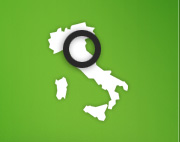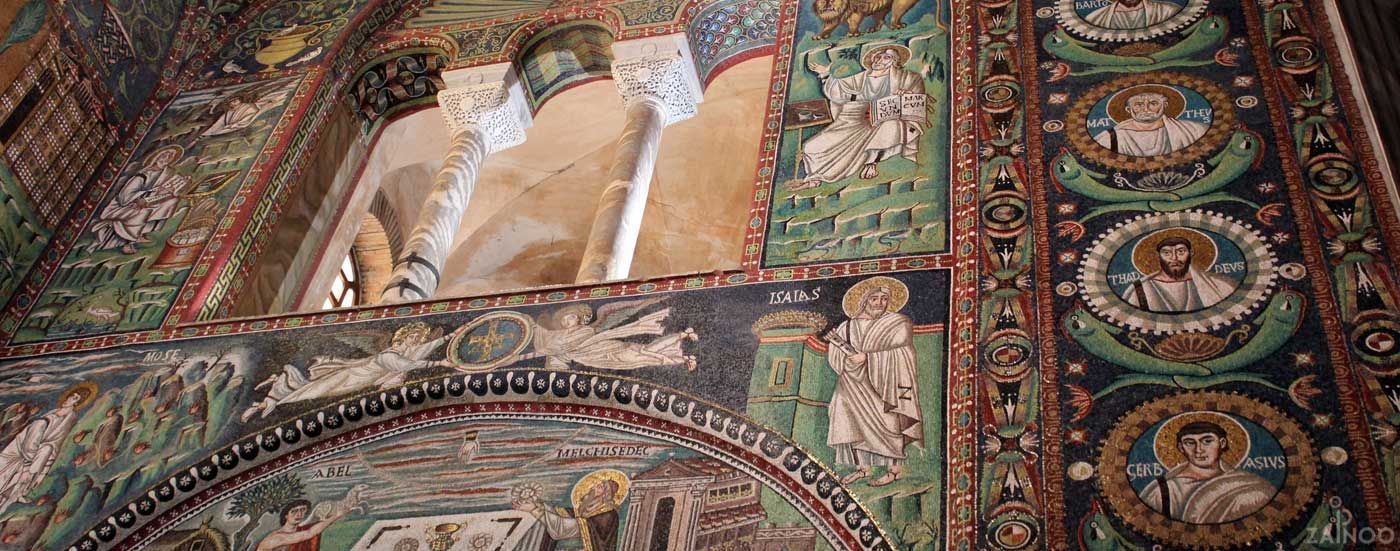History of Ravenna
City of mosaics and migration
One of the first things that comes to mind when thinking about Ravenna are the world-famous Late Antiquity mosaics that managed to survive the Byzantine Iconoclastic Controversy unharmed only to be declared World Heritage Site by the UNESCO in 1996. The Migration period, too, left its mark on the capital of the eponymous province. Several finds bear witness to this eventful time making Ravenna a colourful hub of clashing cultures.
From Roman port to imperial empire
Ravenna originated around 500 BC as part of the lagoon territory washed by the sea and the sweet water of the Po Delta. It was initially populated by Umbri, Etruscans and Gauls. Ravenna came under Roman influence during the construction of the Via Emilia in the 2nd century BC. Emperor Augustus ordered the construction of the naval port Portus Classus in the nearby bay. When the Roman Empire collapsed, Emperor Flavius Honorious relocated the capital of the West Roman Empire from Milan to Ravenna, because Ravenna was easier to defend due to its special location. The city gained political influence and remained main imperial capital until the last emperor of the West Roman Empire, Romulus Augustulus, was removed from power by the German military leader Odoacer in 476.
Heyday under Ostrogoth regency
After a two year-siege, Odoacer, the first King of Italy, was killed by Theoderic the Great, king of the Germanic Ostrogoths, in 493 following an unsuccessful escape attempt. Ravenna continued its seemingly unstoppable rise during Theoderic's regency seeing a cultural and economic heyday that resulted in the origin of some of the world-famous mosaics. The town also became the stronghold of the Italian salt trade. The Eastern Roman Empire conquered Ravenna after Theoderic's death making Ravenna its outpost. It had an important role during the battles against the invading Langobards and eventually became an exarchate of the Byzantine Empire. It wasn’t until 751 that the Langobards lead by King Aistulf managed to conquer Ravenna, thereby ending the Byzantine rule over Central Italy. Venice became the new stronghold of salt trade.
Papal States and Ravenna today
Aistulf besieged the Pope in Rome in 756. Pippin the Younger, King of The Franks, defeated the Langobards during two successful campaigns and handed the conquered land to the Pope (Donation of Pippin) in accordance with the Contract of Quierzy. Pippin thereby founded the Papal States, which Ravenna remained a part of until the unification of Italy except for two interruptions – one by Venice (1441-1509) and one by Napoleon (1797-1815). During this Papal era, Ravenna was ruled by influential families, such as the Traversari family and the Da Polenta family. Dante finished his "Divine Comedy" in Ravenna and died shortly after on 14 September 1321. His remains are stored in the Tomba di Dante. Ravenna was severely bombed and destroyed during World War II. The discovery of natural gas in 1953 lead to an economic boom. Ravenna, today, is an important petrochemistry site and seaside resort with many beaches, yet has to battle subsidence.



Tweet